Oppenheimer Replies
By J. Robert Oppenheimer | July 17, 2023
Oppenheimer Replies
By J. Robert Oppenheimer | July 17, 2023
(Oppenheimer Replies, as originally published in the May 1954 issue of the Bulletin of the Atomic Scientists on page 177. Nichols’ initiating letter can be seen at the following link, titled Nichols Presents Charges.)
On March 4, Dr. Oppenheimer replied to General Nichols’ letter of December 23, 1953. The complete text is printed below.
DEAR GENERAL NICHOLS:
This is in answer to your letter of December 23, 1953, in which the question is raised whether my continued employment as a consultant on Atomic Energy Commission work “will endanger the common defense and security and whether such continued employment is clearly consistent with the interests of the national security.”
Though of course I would have no desire to retain an advisory position if my advice were not needed, I cannot ignore the question you have raised, nor accept the suggestion that I am unfit for public service.
The items of so-called “derogatory information” set forth in your letter cannot be fairly understood except in the context of my life and my work. This answer is in the form of a summary account of relevant aspects of my life in more or less chronological order, in the course of which I shall comment on the specific items in your letter. Through this answer and through the hearings before the Personnel Security Board, which I hereby request, I hope to provide a fair basis upon which the questions posed by your letter may be resolved.
I was born in New York in 1904. My father had come to this country at the age of 17 from Germany. He was a successful businessman and quite active in community affairs. My mother was born in Baltimore and before her marriage was an artist and teacher of art.
I attended the Ethical Culture School and Harvard College, which I entered in 1922. I completed the work for my degree in the spring of 1925. I then left Harvard to study at Cambridge University and in Göttingen, where in the spring of 1927 I took my doctor’s degree.
The following year I was National Research Fellow at Harvard and at the California Institute of Technology. In the following year I was Fellow of the International Education Board at the University of Leiden and at the Technical High School in Zurich.
In the spring of 1929, I returned to the United States. I was homesick for this country, and in fact I did not leave it again for over nineteen years. I had learned a great deal in my student days about the new physics; I wanted to pursue this myself, to explain it, and to foster its cultivation.
I had had many invitations to university positions, one or two in Europe, and perhaps ten in the United States. I accepted concurrent appointments as assistant professor at the California Institute of Technology in Pasadena and at the University of California in Berkeley. For the coming twelve years, I was to devote my time to these two faculties.
Starting with a single graduate student in my first year in Berkeley, we gradually began to build up what was to become the largest school in the country of graduate and post-doctoral study in theoretical physics, so that as time went on, we came to have between a dozen and twenty people learning and adding to quantum theory, nuclear physics, relativity, and other modem physics.
As the number of students increased, so in general did their quality: the men who worked with me during those years hold chairs in many of the great centers of physics in this country; they have made important contributions to science, and in many cases to the atomic energy project. Many of my students would accompany me to Pasadena in the spring after the Berkeley term was over, so that we might continue to work together.
My friends, both in Pasadena and in Berkeley, were mostly faculty people, scientists, classicists, and artists. I studied and read Sanskrit with Arthur Rider. I read very widely, but mostly classics, novels, plays, and poetry; and I read something of other parts of science. I was not interested in and did not read about economics or politics. I was almost wholly divorced from the contemporary scene in this country.
I never read a newspaper or a current magazine like Time or Harper’s; I had no radio, no telephone; I learned of the stock market crash in the fall of 1929 only long after the event; the first time I ever voted was in the Presidential election of 1936.
To many of my friends, my indifference to contemporary affairs seemed bizarre, and they often chided me with being too much of a highbrow. I was interested in man and his experience; I was deeply interested in my science; but I had no understanding of the relations of man to his society.
I spent some weeks each summer with my brother Frank at our ranch in New Mexico. There was a strong bond of affection between us. After my mother’s death, my father came often, mostly in Berkeley, to visit me; and we had an intimate and close association until his death.
Beginning in late 1936, my interests began to change. These changes did not alter my earlier friendships, my relations to my physics; but they added something new. I can discern in retrospect more than one reason for these changes.
I had had a continuing, smoldering fury about the treatment of Jews in Germany. I had relatives there, and was later to help in extricating them and bringing them to this country.
I saw what the depression was doing to my students. Often they could get no jobs, or jobs which were wholly inadequate. And through them, I began to sense the larger sorrows of the great depression. I began to understand how deeply political and economic events could affect men’s lives. I began to feel the need to participate more fully in the life of the community. But I had no framework of political conviction or experience to give me perspective in these matters.
In the spring of 1936, I had been introduced by friends to Jean Tatlock, the daughter of a noted Professor of English at the University; and in the autumn, I began to court her, and we grew close to each other. We were at least twice close enough to marriage to think of ourselves as engaged.
Between 1939 and her death in 1944 I saw her very rarely. She told me about her Communist party memberships; they were on again, off again affairs, and never seemed to provide for her what she was seeking. I do not believe that her interests were really political. She was a person of deep religious feeling. She loved this country and its people and its life. She was, as it turned out, a friend of many fellow travelers and Communists, with a number of whom I was later to become acquainted.
I should not give the impression that it was wholly because of Jean Tatlock that I made left-wing friends, or felt sympathy for causes which hitherto would have seemed so remote from me, like the Loyalist cause in Spain, and the organization of migratory workers. I have mentioned some of the other contributing causes. I liked the new sense of companionship, and at the same time felt that I was coming to be part of the life of my time and country.
In 1937, my father died; a little later, when I came into an inheritance, I made a will leaving this to the University of California for fellowships to graduate students.
This was the era of what the Communists then called the “united front,” in which they joined with many nonCommunist groups in support of humanitarian objectives. Many of these objectives engaged my interest.
I contributed to the strike fund of one of the major strikes of Bridges’ union; I subscribed to The People’s World; I contributed to the various committees and organizations which were intended to help the Spanish Loyalist cause. I was invited to help establish the Teacher’s Union. which included faculty and teaching assistants at the University, and school teachers of the East Bay. I was elected recording secretary. My connection with the Teacher’s Union continued until some time in 1941, when we disbanded our chapter.
During these same years, I also began to take part in the management of the Physics Department, the selection of courses and the awarding of fellowships, and in the general affairs of the Graduate School of the University, mostly through the Graduate Council, of which I was a member for some years.
I also became involved in other organizations. For perhaps a year, I was a member of the Western Council of the Consumer’s Union, which was concerned with evaluating information on products of interest on the West Coast. I do not recall Arthur Kallet, the national head of the Consumer’s Union; at most I could have met him if he made a visit to the West Coast.
I joined the American Committee for Democracy and Intellectual Freedom in 1937. I think it then stood as a protest against what had happened to intellectuals and professionals in Germany.
I listed, in the Personnel Security Questionnaire that I filled out in 1942 for employment with the Manhattan District, the very few political organizations of which I had ever been a member. I say on that questionnaire that I did not include sponsorships. I have no recollection of the Friends of the Chinese People, or of what, if any, my connection with this organization was.
The statement is attributed to me that, while I was not a Communist, I “had probably belonged to every Communist-front organization on the West Coast” and had signed many petitions in which Communists were interested.
I do not recall this statement, nor to whom I might have made it, nor the circumstances. The quotation is not true. It seems clear to me that if I said anything along the lines quoted, it was a half-jocular overstatement.
The matter which most engaged my sympathies and interests was the war in Spain. This was not a matter of understanding and informed convictions. I had never been to Spain; I knew a little of its literature; I knew nothing of its history or politics or contemporary problems. But like a great many other Americans, I was emotionally committed to the Loyalist cause.
I contributed to various organizations for Spanish relief. I went to, and helped with many parties, bazaars, and the like. Even when the war in Spain was manifestly lost, these activities continued. The end of the war and the defeat of the Loyalists caused me great sorrow.
It was probably through Spanish relief efforts that I met Dr. Thomas Addis and Rudy Lambert. As to the latter, our association never became close. As to the former, he was a distinguished medical scientist who became a friend.
Addis asked me, perhaps in the winter of 1937-38, to contribute through him to the Spanish cause. He made it clear that this money, unlike that which went to the relief organizations, would go straight to the fighting effort, and that it would go through Communist channels. I did so contribute; usually when he communicated with me, explaining the nature of the need. I gave him sums in cash, probably never much less than a hundred dollars, and occasionally perhaps somewhat more than that, several times during the winter. I made no such contributions during the spring terms when I was in Pasadena or during the summers in New Mexico.
Later—but I do not remember the date—Addis introduced me to Isaac Folkoff, who was, as Addis indicated, in some way connected with the Communist party, and told me that Folkoff would from then on get in touch with me when there was need for money. This he did, in much the same way that Addis had done before. As before, these contributions were for specific purposes, principally the Spanish war and Spanish relief.
Sometimes I was asked for money for other purposes, the organization of migratory labor in the California valleys, for instance. I doubt that it occurred to me that the contributions might be directed to purposes other than those I had intended or that such other purposes might be evil. I did not then regard Communists as dangerous; and some of their declared objectives seemed to me desirable.
In time these contributions came to an end. I went to a big Spanish relief party the night before Pearl Harbor; and the next day, as we heard the news of the outbreak of war, I decided that I had had about enough of the Spanish cause, and that there were other and more pressing crises in the world. My contributions would not have continued much longer.
My brother Frank married in 1936. Our relations thereafter were inevitably less intimate than before. He told me at the time—probably 1937—that he and his wife Jackie had joined the Communist party. Over the years we saw one another as occasions arose. We still spent summer holidays together. In 1937 or 1940 Frank and Jackie moved to Stanford; in the autumn of 1941 they came to Berkeley, and Frank worked for the Radiation Laboratory. At that time he made it clear to me that he was no longer a member of the Communist party.
As to the alleged activities of Jackie and Frank in 1944, 1945, and 1946: I was not in Berkeley in 1944 and 1945; I was away most of the first half of 1946; I do not know whether these activities occurred or not, and if I had any knowledge of them at the time it would only have been very sketchy.
After Christmas of 1945 my family and I visited my brother’s family for a few days during the holidays, and I remember that we were there New Year’s Eve and New Year’s Day in 1946. On New Year’s Day people were constantly dropping in. Pinsky and Adelson, who were at most casual acquaintances of mine, may have been among them, but I cannot remember their being there, nor indeed do I remember any of the others who dropped in that day or what was discussed.
It was in the summer of 1939 in Pasadena that I first met my wife. She was married to Dr. Harrison, who was a friend and associate of the Tolmans, Lauritsens, and others on the California Institute of Technology faculty. I learned of her earlier marriage to Joe Dallet and of his death
fighting in Spain. He had been a Communist party official, and for a year or two during their brief marriage my wife was a Communist party member. When I met her I found in her a deep loyalty to her former husband, a complete disengagement from any political activity, and a certain disappointment and contempt that the Communist party was not in fact what she had once thought it was.
My own views were also evolving. Although Sidney and Beatrice Webb’s book on Russia, which I had read in 1936, and the talk that I heard at that time had predisposed me to make much of the economic progress and general level of welfare in Russia, and little of its political tyranny, my views on this were to change.
I read about the purge trials, though not in full detail, and could never find a view of them which was not damning to the Soviet system. In 1938 I met three physicists who had actually lived in Russia in the nineteen-thirties. All were eminent scientists: Placzek, Weisskopf, and Schein; and the first two have become close friends. What they reported seemed to me so solid, so unfanatical, so true, that it made a great impression; and it presented Russia, even when seen from their limited experience, as a land of purge and terror, of ludicrously bad management and of a long-suffering people.
I need to make clear that this changing opinion of Russia, which was to be reinforced by the Nazi-Soviet pact, and the behavior of the Soviet Union in Poland and in Finland, did not mean a sharp break for me with those who held to different views. At that time I did not fully understand—as in time I came to understand—how completely the Communist party in this country was under the control of Russia. During and after the Battle of France, however, and during the Battle of England the next autumn, I found myself increasingly out of sympathy with the policy of disengagement and neutrality that the Communist press advocated.
After our marriage in 1940 my wife and I for about two years had much the same circle of friends as I had had before—mostly physicists and university people. Among them the Chevaliers, in particular, showed us many acts of kindness. We were occasionally invited to more or less obviously leftwing affairs, Spanish relief parties that still continued; and on two occasions, once in San Francisco and once in Berkeley, we attended social gatherings of apparently well-to-do people, at which Schneiderman, an official of the Communist party in California, attempted, not with success as far as we were concerned, to explain what the Communist line was all about.
I was asked about the Berkeley meeting in an interview in 1946 with agents of the F.B.I. I did not then recall this meeting, and in particular did not in any way connect it with Chevalier, about whom the agents were questioning me; hence it seemed wholly irrelevant to the matter under discussion. Later my wife reminded me that the Berkeley meeting had occurred at the house of the Chevaliers; and when I was asked about it by the F.B.I. in 1950 I told them so.
We saw little of Kenneth May; we both liked him. It would have been not unnatural for us to go to a housewarming for May and his wife; neither my wife nor I remember such a party.
Weinberg was known to me as a graduate student; Hiskey I did not know. Steve Nelson came a few times with his family to visit; he had befriended my wife in Paris, at the time of her husband’s death in Spain in 1937. Neither of us has seen him since 1941 or 1942.
Because of these associations that I have described, and the contributions mentioned earlier, I might well have appeared at the time as quite close to the Communist party—perhaps even to some people as belonging to it. As I have said, some of its declared objectives seemed to me desirable. But I never was a member of the Communist party. I never accepted Communist dogma or theory; in fact, it never made sense to me.
I had no clearly formulated political views. I hated tyranny and repression and every form of dictatorial control of thought. In most cases I did not in those days know who was and who was not a member of the Communist party. No one ever asked me to join the Communist party.
Your letter sets forth statements made in 1942-45 by persons said to be Communist party officials to the effect that I was a concealed member of the Communist party. I have no knowledge as to what these people might have said. What I do know is that I was never a member of the party, concealed or open.
Even the names of some of the people mentioned are strange to me, such as Jack Manley and Katrina Sandow. I doubt that I met Bernadette Doyle, though I recognize her name. Pinsky and Adelson I met at most casually, as previously mentioned.
By the time that we moved to Los Alamos in early 1943, both as a result of my changed views and of the great pressure of war work, my participation in left-wing organizations and my association with left-wing circles had ceased and were never to be re-established.
In August 1941, I bought Eagle Hill at Berkeley for my wife, which was the first home we had of our own. We settled down to live in it with our new baby. We had a good many friends, but little leisure. My wife was working in biology at the university.
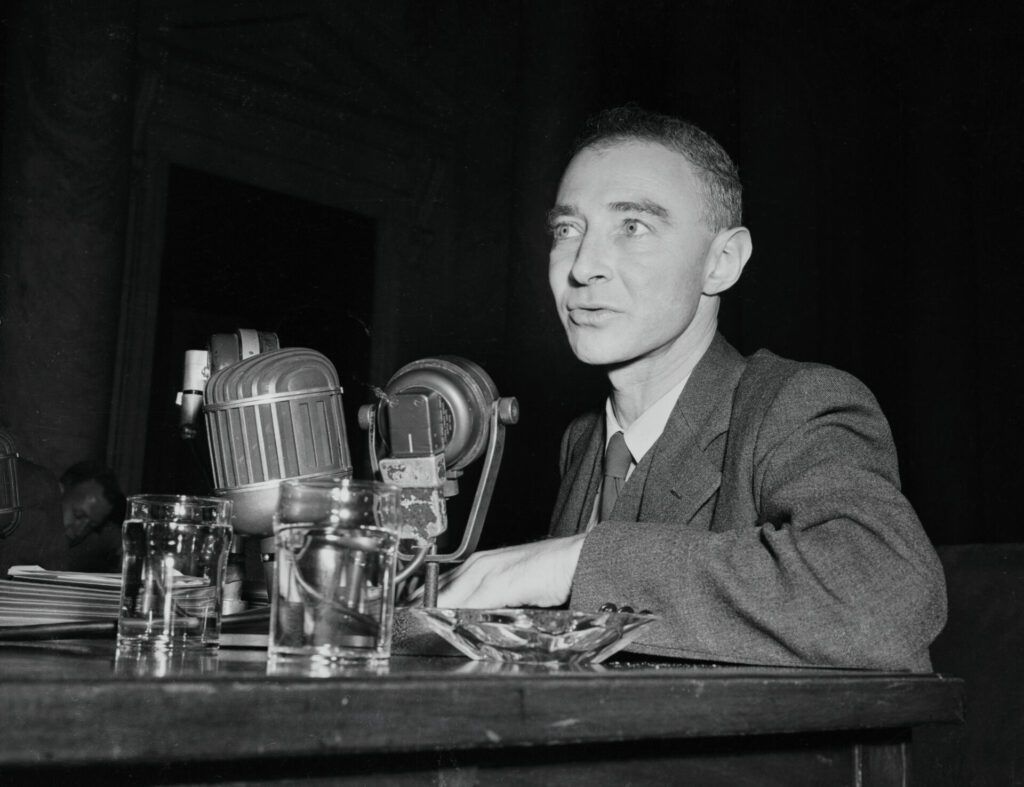
Many of the men I had known went off to work on radar and other aspects of military research. I was not without envy of them; but it was not until my first connection with the rudimentary atomic energy enterprise that I began to see any way in which I could be of direct use.
Ever since the discovery of nuclear fission, the possibility of powerful explosives based on it had been very much in my mind, as it had in that of many other physicists. We had some understanding of what this might do for us in the war, and how much it might change the course of history.
In the autumn of 1941, a special committee was set up by the National Academy of Sciences under the chairmanship of Arthur Compton to review the prospects and feasibility of the different uses of atomic energy for military purposes. I attended a meeting of this committee; this was my first official connection with the atomic energy program.
After the Academy meeting, I spent some time in preliminary calculations about the construction and performance of atomic bombs, and became increasingly excited at the prospects.
At the same time I still had a quite heavy burden of academic work with courses and graduate students. I also began to consult, more or less regularly, with the staff of the Radiation Laboratory in Berkeley on their program for the electric-magnetic separation of uranium isotopes. I was never a member or employee of the laboratory; but I attended many of its staff and policy meetings.
With the help of two of my graduate students, I developed an invention which was embodied in the production plants at Oak Ridge. I attended the conference in Chicago at which the Metallurgical Laboratory (to produce plutonium) was established and its initial program projected.
In the spring of 1942, Compton called me to Chicago to discuss the state of work on the bomb itself. During this meeting Compton asked me to take the responsibility of this work, which at that time consisted of numerous scattered experimental projects. Although I had had no administrative experience and was not an experimental physicist, I felt sufficiently informed and challenged by the problem to be glad to accept. At this time I became an employee of the Metallurgical Laboratory.
After this conference I called together a theoretical study group in Berkeley in which Bethe, Konopinski, Serber, Teller, Van Vleck, and I participated. We had an adventurous time. We spent much of the summer of 1942 in Berkeley in a joint study that for the first time really came to grips with the physical problems of atomic bombs, atomic explosions, and the possibility of using fission explosions to initiate thermonuclear reactions.
I called this possibility to the attention of Dr. Bush during the late summer; the technical views on this subject were to develop and change from then until the present day.
After these studies there was little doubt that a potentially world-shattering undertaking lay ahead. We began to see the great explosion of Alamogordo and the greater explosions of Eniwetok with a surer foreknowledge. We also began to see how rough, difficult, challenging, and unpredictable this job might turn out to be.
When I entered the employ of the Metallurgical Laboratory I filled out my first Personnel Security Questionnaire. Later in the summer, I had word from Compton that there was question of my clearance on the ground that I had belonged to leftwing groups; but it was indicated that this would not prove a bar to my further work on the program.
In late summer, after a review of the experimental work, I became convinced, as did others, that a major change was called for in the work on the bomb itself. We needed a central laboratory devoted wholly to this purpose, where people could talk freely with each other, where theoretical ideas and experimental findings could affect each other, where the waste and frustration and error of the many compartmentalized experimental studies could be eliminated, where we could begin to come to grips with chemical, metallurgical, engineering, and ordnance problems that had so far received no consideration. We therefore sought to establish this laboratory for a direct attack on all the problems inherent in the most rapid possible development and production of atomic bombs.
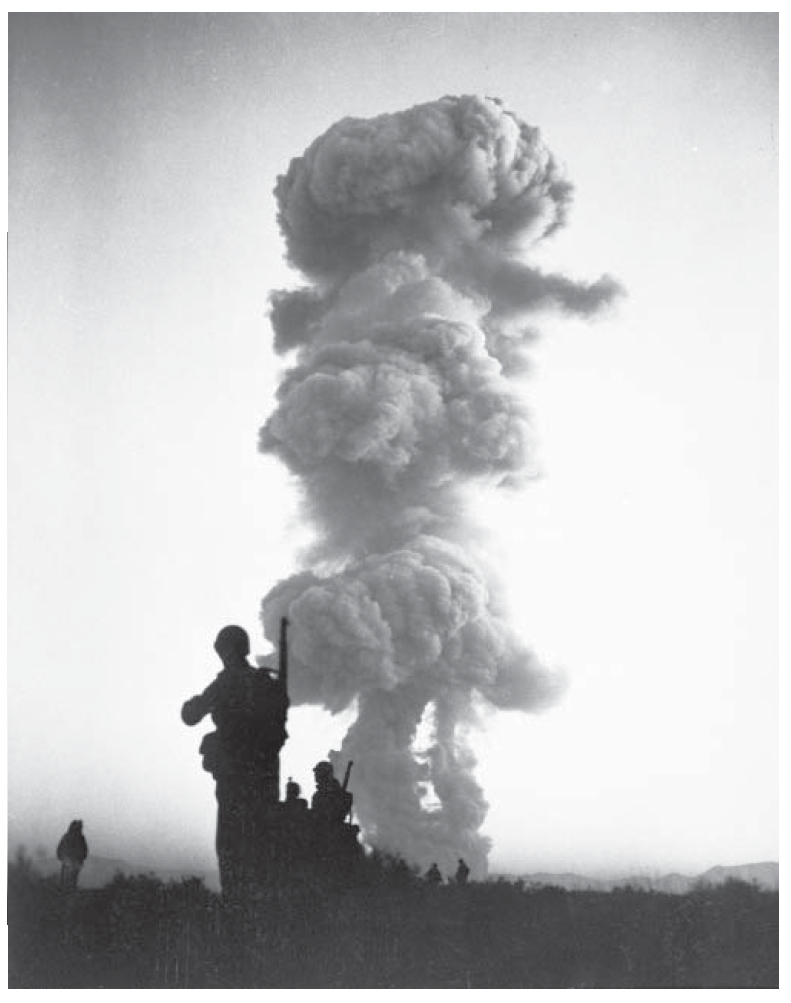
In the autumn of 1942 General Groves assumed charge of the Manhattan Engineer District. I discussed with him the need for an atomic bomb laboratory. There had been some thought of making this laboratory a part of Oak Ridge. For a time there was support for making it a military establishment in which key personnel would be commissioned as officers; and in preparation for this course I once went to the Presidio to take the initial steps toward obtaining a commission.
After a good deal of discussion with the personnel who would be needed at Los Alamos and with General Groves and his advisers, it was decided that the Laboratory should, at least initially, be a civilian establishment in a military post. While this consideration was going on, I had shown General Groves Los Alamos; and he almost immediately took steps to acquire the site.
In early 1943, I received a letter signed by General Groves and Dr. Conant, appointing me director of the laboratory, and outlining their conception of how it was to be organized and administered. The necessary construction and assembling of the needed facilities were begun. All of us worked in close collaboration with the engineers of the Manhattan District.
The site of Los Alamos was selected, in part at least, because it enabled those responsible to balance the obvious need for security with the equally important need of free communication among those engaged in the work. Security, it was hoped, would be achieved by removing the laboratory to a remote area, fenced and patrolled where communication with the outside was extremely limited.
Telephone calls were monitored, mail was censored, and personnel who left the area—something permitted only for the clearest of causes—knew that their movements might be under surveillance. On the other hand, for those within the community, full exposition and discussion among those competent to use the information was encouraged.
The last months of 1942 and early 1943 had hardly hours enough to get Los Alamos established. The real problem had to do with getting to Los Alamos the men who would make a success of the undertaking. For this we needed to understand as clearly as we then could what our technical program would be, what men we would need, what facilities, what organization, what plan.
The program of recruitment was massive. Even though we then underestimated the ultimate size of the laboratory, which was to have almost 4,000 members by the spring of 1945, and even though we did not at that time see clearly some of the difficulties which were to bedevil and threaten the enterprise, we knew that it was a big, complex, and diverse job.
Even the initial plan of the laboratory called for a start with more than 100 highly qualified and trained scientists, to say nothing of the technicians, staff, and mechanics who would be required for their support, and of the equipment that we would have to beg and borrow since there would be no time to build it from scratch. We had to recruit at a time when the country was fully engaged in war and almost every competent scientist was already involved in the military effort.
The primary burden of this fell on me. To recruit staff I traveled all over the country talking with people who had been working on one or another aspect of the atomic energy enterprise, and people in radar work, for example, and underwater sound, telling them about the job, the place that we were going to, and enlisting their enthusiasm.
In order to bring responsible scientists to Los Alamos, I had to rely on their sense of the interest, urgency, and feasibility of the Los Alamos mission. I had to tell them enough of what the job was, and give strong enough assurance that it might be successfully accomplished in time to affect the outcome of the war, to make it clear that they were justified in leaving their other work to come to this job.
The prospect of coming to Los Alamos aroused great misgivings. It was to be a military post; men were asked to sign up more or less for the duration; restrictions on travel and on the freedom of families to move about were to be severe; and no one could be sure of the extent to which the necessary technical freedom of action could actually be maintained by the laboratory.
The notion of disappearing into the New Mexico desert for an indeterminate period and under quasi-military auspices disturbed a good many scientists, and the families of many more. But there was another side to it.
Almost everyone realized that this was a great undertaking. Almost everyone knew that if it were completed successfully and rapidly enough. it might determine the outcome of the war. Almost everyone knew that it was an unparalleled opportunity to bring to bear the basic knowledge and art of science for the benefit of his country. Almost everyone knew that this job, if it were achieved, would be a part of history.
This sense of excitement, of devotion and of patriotism in the end prevailed. Most of those with whom I talked came to Los Alamos. Once they came, confidence in the enterprise grew as men learned more of the technical status of the work; and though the laboratory was to double and redouble its size many times before the end, once it had started it was on the road to success.
We had information in those days of German activity in the field of nuclear fission. We were aware of what it might mean if they beat us to the draw in the development of atomic bombs. The consensus of all our opinions, and every directive that I had, stressed the extreme urgency of our work, as well as the need for guarding all knowledge of it from our enemies. Past Communist connections or sympathies did not necessarily disqualify a man from employment, if we had confidence in his integrity and dependability as a man.
There are two items of derogatory information on which I need to comment at this point. The first is that it was reported that I had talked the atomic bomb question over with Communist party members during this period (1942-45). The second is that I was responsible for the employment on the atomic bomb project of individuals who were members of the Communist party or closely associated with activities of the Communist party.
As to the first, my only discussions of matters connected with the atomic bomb were for official work or for recruiting the staff of the enterprise.
So far as I knew, none of these discussions were with Communist party members. I never discussed anything of my secret work or anything about the atomic bomb with Steve Nelson.
As to the statement that I secured the employment of doubtful persons on the project:
Of those mentioned, Lomanitz, Friedman, and Weinberg were never employed at Los Alamos. I believe that I had nothing to do with the employment of Friedman and Weinberg by the Radiation Laboratory; I had no responsibility for the hiring of anyone there. During the time that I continued to serve as a consultant with the Radiation Laboratory, and to advise and direct the work of some of the graduate students, I assigned David Bohm and Chaim Richman to a problem of basic science which might prove useful in analyzing experiments in connection with fast neutrons. That work has long been published.
Another graduate student was Rossi Lomanitz. I remember vaguely a conversation with him in which he expressed reluctance to take part in defense research, and I encouraged him to do what other scientists were doing for their country. Thereafter he did work at the Radiation Laboratory.
I remember no details of our talk. If I asked him to work on the project, I would have assumed that he would be checked by the security officers as a matter of course. Later, in 1943, when Lomanitz was inducted into the Army, he wrote me asking me to help his return to the project. I forwarded a copy of his letter to the Manhattan District Security officers, and let the matter rest there. Still later, at Lomanitz’s request, I wrote to his commanding officer that he was qualified for advanced technical work in the Army.
I asked for the transfer of David Bohm to Los Alamos; but this request, like all others, was subject to the assumption that the usual security requirements would apply; and when I was told that there was objection on security grounds to this transfer, I was much surprised, but of course agreed.
David Hawkins was known to the Personnel Director at the laboratory, and I had met and liked him and found him intelligent; I supported the suggestion of the Personnel Director that he come to Los Alamos. I understood that he had left-wing associations; but it was not until in March of 1951, at the time of his testimony, that I knew about his membership in the Communist party.
In 1943 when I was alleged to have stated that “I knew several individuals then at Los Alamos who had been members of the Communist party,” I knew of only one: She was my wife, of whose dissociation from the party, and of whose integrity and loyalty to the United States I had no question. Later, in 1944 or 1945, my brother Frank, who had been cleared for work in Berkeley and at Oak Ridge, came to Los Alamos from Oak Ridge with official approval.
I knew of no attempt to obtain secret information at Los Alamos.
Prior to my going there, my friend Haakon Chevalier with his wife visited us on Eagle Hill, probably in early 1943. During the visit, he came into the kitchen and told me that George Eltenton had spoken to him of the possibility of transmitting technical information to Soviet scientists. I made some strong remark to the effect that this sounded terribly wrong to me. The discussion ended there. Nothing in our long-standing friendship would have led me to believe that Chevalier was actually seeking information; and I was certain that he had no idea of the work on which I was engaged.
It has long been clear to me that I should have reported the incident at once. The events that led me to report it—which I doubt ever would have become known without my report—were unconnected with it.
During the summer of 1943, Colonel Lansdale, the Intelligence Officer of the Manhattan District, came to Los Alamos and told me that he was worried about the security situation in Berkeley because of the activities of the Federation of Architects, Engineers, Chemists, and Technicians. This recalled to my mind that Eltenton was a member and probably a promoter of the FAECT.
Shortly thereafter, I was in Berkeley and I told the security officer that Eltenton would bear watching. When asked why, I said that Eltenton had attempted, through intermediaries, to approach people on the Project, though I mentioned neither myself nor Chevalier. Later, when General Groves urged me to give the details, I told him of my conversation with Chevalier. I still think of Chevalier as a friend.
The story of Los Alamos is long and complex. Part of it is public history. For me it was a time so filled with work, with the need for decision and action and consultation, that there was room for little else.
I lived with my family in the community which was Los Alamos. It was a remarkable community, inspired by a high sense of mission, of duty and of destiny, coherent, dedicated, and remarkably selfless.
There was plenty in the life of Los Alamos to cause irritation; the security restrictions, many of my own devising, the inadequacies and inevitable fumblings of a military post unlike any that had ever existed before, shortages, inequities, and in the laboratory itself the shifting emphasis on different aspects of the technical work as the program moved forward; but I have never known a group more understanding and more devoted to a common purpose, more willing to lay aside personal convenience and prestige, more understanding of the role that they were playing in their country’s history.
Time and again we had in the technical work almost paralyzing crises. Time and again the laboratory drew itself together and faced the new problems and got on with the work. We worked by night and by day; and in the end the many jobs were done.
These years of hard and loyal work of the scientists culminated in the test on July 16, 1945. It was a success. I believe that in the eyes of the War Department, and other knowledgeable people, it was as early a success as they had thought possible, given all the circumstances, and rather a greater one. There were many indications from the Secretary of War and General Groves, and many others, that official opinion was one of satisfaction with what had been accomplished.
At the time, it was hard for us at Los Alamos not to share that satisfaction, and hard for me not to accept the conclusion that I had managed the enterprise well and played a key part in its success. But it needs to be stated that many others contributed the decisive ideas and carried out the work which led to this success, and that my role was that of understanding, encouraging, suggesting, and deciding. It was the very opposite of a one-man show.
Even before the July 16 test and the use of the bombs in Japan, the members of the laboratory began to have a new sense of the possible import of what was going on.
In the early days, when success was less certain and timing unsure, and the war with Germany and Japan in a desperate phase, it was enough for us to think that we had a job to do. Now, with Germany defeated, the war in the Pacific approaching a crisis, and the success of our undertaking almost assured, there was a sense both of hope and of anxiety as to what this spectacular development might portend for the future. This came to us a little earlier than to the public generally, because we saw the technical development at close range and in secret; but its quality was very much the same as the public response after Hiroshima and Nagasaki.
Thus it was natural that in the spring of 1945 I welcomed the opportunity when I was asked by Secretary Stimson to serve, along with Compton, Lawrence, and Fermi, on an advisory panel to his Interim Committee on Atomic Energy.
We met with that Committee on the 1st of June, 1945; and even during the week when Hiroshima and Nagasaki were being bombed, we met at Los Alamos to sketch out a prospectus of what the technical future in atomic energy might look like: atomic warheads for guided missiles, improvements in bomb design, the thermonuclear program, power, propulsion, and the new tools available from atomic technology for research in science, medicine, and technology.
This work absorbed much of my time during September and October; and in connection with it I was asked to consult with the War and State Departments on atomic energy legislation, and in a preliminary way on the international control of atomic energy.
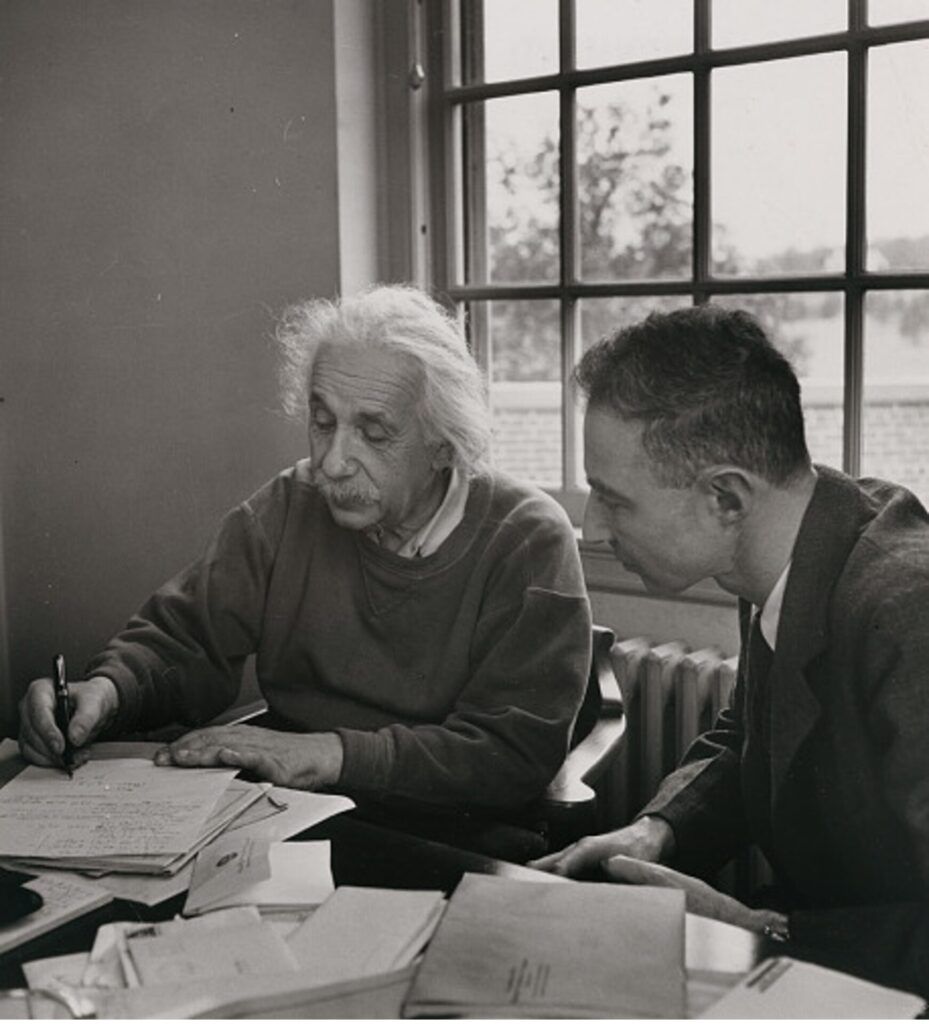
I resigned as Director of Los Alamos on Oct. 16, 1945, after having secured the consent of Commander Bradbury and of General Groves that Bradbury should act as my successor.
There were then on the books at the laboratory, embodied in memoranda and reports and summarized by me in letters to General Groves, developments in atomic weapons, which could well have occupied years for their fulfillment, and which have in fact provided some, though by no means all, of the themes for Los Alamos work since that time. It was not entirely clear whether the future of atomic weapons work in this country should be continued at or confined to Los Alamos or started elsewhere at a more accessible and more practical site, or indeed what effect international agreements might have on the program. But in the meantime Los Alamos had to be kept going until there was created an authority competent to decide the question of its future. This was to take almost a year.
In November 1945, I resumed my teaching at the California Institute of Technology, with an intention and a hope, never realized, that this should be a full-time undertaking. The consultation about postwar matters which had already begun continued, and I was asked over and over both by the Executive and the Congress for advice on atomic energy.
I had a feeling of deep responsibility, interest, and concern for many of the problems with which the development of atomic energy confronted our country.
This development was to be a major factor in the history of the evolving and mounting conflict between the free world and the Soviet Union. When I and other scientists were called on for advice, our principal duty was to make our technical experience and judgment available. We were called to do this in a context and against a background of the official views of the government on the military and political situation of our country. Immediately after the war, I was deeply involved in the effort to devise effective means for the international control of atomic weapons, means which might, in the words of those days, tend toward the elimination of war itself.
As the prospects of success receded, and as evidence of Soviet hostility and growing military power accumulated, we had more and more to devote ourselves to finding ways of adapting our atomic potential to offset the Soviet threat.
In the period marked by the first Soviet atomic explosion, the war in Korea and the Chinese Communist intervention there, we were principally preoccupied, though we never forgot long-term problems, with immediate measures which could rapidly build up the strength of the United States under the threat of an imminent general war.
As our own atomic potential increased and developed, we were aware of the dangers inherent in comparable developments by the enemy, and preventive and defensive measures were very much on our minds. Throughout this time the role of atomic weapons was to be central.
From the close of the war, when I returned to the West Coast until finally in the spring of 1947 when I went to Princeton as the Director of the Institute for Advanced Study, I was able to spend very little time at home and in teaching in California.
In October 1945, at the request of Secretary of War Patterson, I had testified before the House Committee on Military Affairs in support of the May-Johnson bill, which I endorsed as an interim means of bringing about without delay the much needed transition from the wartime administration of the Manhattan District to postwar management of the atomic energy enterprise.
In December 1945, and later, I appeared at Senator McMahon’s request in sessions of his Special Committee on Atomic Energy, which was considering legislation on the same subject.
Under the chairmanship of Dr. Richard Tolman, I served on a committee set up by General Groves to consider classification policy on matters of atomic energy. For two months, early in 1946, I worked steadily as a member of a panel, the Board of Consultants to the Secretary of State’s Committee on Atomic Energy, which, with the Secretary of State’s Committee, prepared the so-called Acheson-Lilienthal report. After the publication of this report, I spoke publicly in support of it.
A little later, when Mr. Baruch was appointed to represent the United States in the United Nations Atomic Energy Committee, I became one of the scientific consultants to Mr. Baruch and his staff in preparation for and in the conduct of our efforts to gain support for the United States’ plan. I continued as consultant to General Osborn when he took over the effort.
At the end of 1946 I was appointed by the President as a member of the General Advisory Committee to the Atomic Energy Commission. At its first meeting I was elected chairman, and was re-elected until the expiration of my term in 1952. This was my principal assignment during these years as far as the atomic energy program was concerned, and my principal preoccupation apart from academic work.
A little later I was appointed to the Committee on Atomic Energy of the Research and Development Board, which was to advise the Military Establishment about the technical aspects of the atomic energy program; I served on it for seven years; and twice was designated chairman of special panels set up by the committee.
Meanwhile I had become widely regarded as a principal author or inventor of the atomic bomb, more widely, I well knew, than the facts warranted. In a modest way I had become a kind of public personage.
I was deluged, as I have been ever since, with requests to lecture and to take part in numerous scientific activities and public affairs. Most of these I did not accept. Some, important for the promotion of science or learning or of public policies that corresponded to my convictions, I did accept: the Council of the National Academy of Sciences, the Committee on the Present Danger, the Board of Overseers of Harvard College, and a good number of others.
A quite different and I believe unique occurrence is cited as an item of derogatory information—that in 1946 I was “listed as vice chairman on the letterhead of the Independent Citizens Committee of the Arts, Sciences, Professions, Inc. . . . cited as a Communist-front by the House Committee on Un-American Activities.”
The fact is that in 1946 when I was at work on the international control of atomic energy, I was notified that I had been nominated and then elected as vice-chairman of this organization.
When I began to see that its literature included slogans such as “Withdraw United States troops from China,” and that it was endorsing the criticism enunciated by the then Secretary Wallace of United States policy on atomic energy, I advised the organization in a letter on October 11, 1946, that I was not in accord with its policy, that I regarded the recommendations of Mr. Wallace as not likely to advance the cause of finding a satisfactory solution for the control of atomic energy, and that I wished to resign. When an effort was made to dissuade me from this course I again wrote on December 2, 1946, insisting upon resignation.
Later in the postwar period an incident occurred which seems to be the basis of one of the items of derogatory information. In May 1950, Paul Crouch, a former Communist official, and Mrs. Crouch testified before the California State Committee on UnAmerican Activities that in July 1941, they had attended a Communist party meeting at a house in Berkeley, of which I was then the tenant.
On the basis of pictures and movies of me which they saw some eight years later, they said they recognized me as having been present. When the F.B.I. first talked to me about this alleged incident, I was quite certain that no such meeting as Crouch described had occurred. So was my wife, when I discussed it with her. Later, when I saw the testimony, I became even more certain.
Crouch had described the gathering as a closed meeting of the Communist party. I was never a member of the party. Crouch said that no introductions had been made. I could not recall ever having had a group of people at my home that had not been introduced. In May of 1952, I again discussed this alleged meeting with the United States attorney in the Weinberg case. (An indictment against Joseph Weinberg for perjury for having among other things denied membership in the Communist party.)
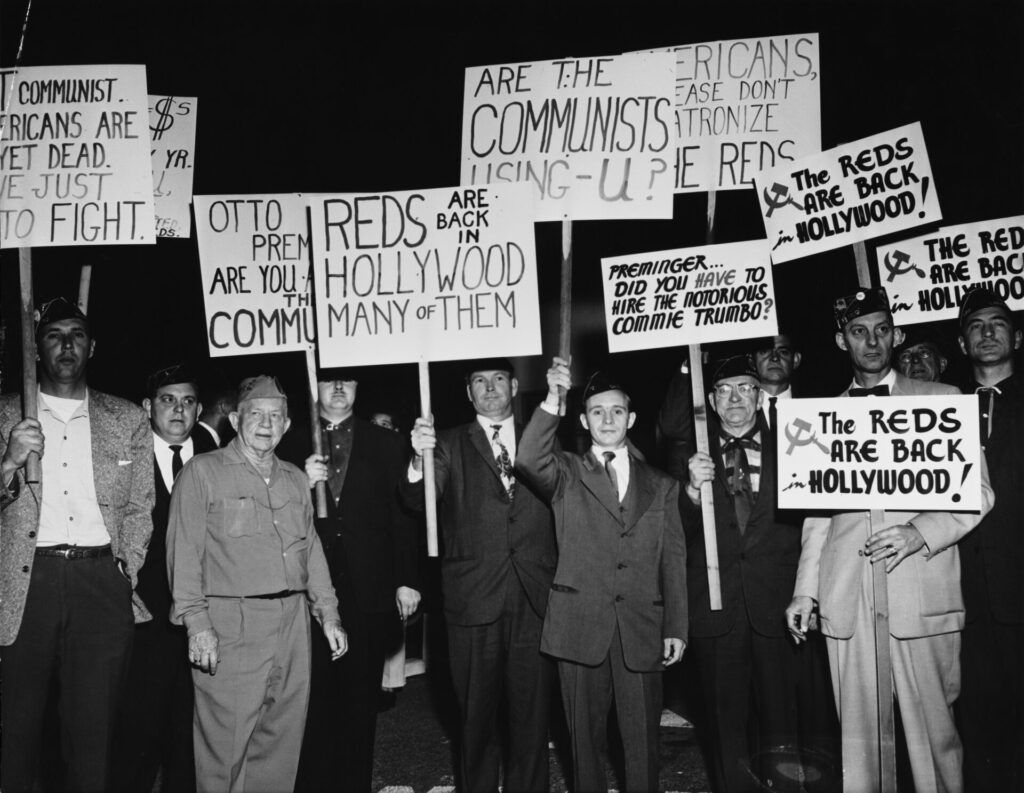
I again said that I could not have been present at a closed meeting of the Communist party because I was not a member of the party; that I had searched my memory and that the only thing that conceivably could be relevant was the vaguest of impressions that someone on the campus might at some time have asked permission to use our home for a gathering of young people; that, however, I could recall no such gathering, nor any meeting even remotely resembling the one described by Crouch; that I thought it probable that at the time of the meeting, which by then had been fixed by Crouch as approximately July 23, my wife and I were away from Berkeley.
Shortly thereafter, with the aid of counsel, we were able to establish that my wife and I left Berkeley within a few days after July 4, 1941, and did not return until toward the end of the first week in August.
I need to turn now to an account of some of the measures which, as chairman of the General Advisory Committee, and in other capacities, I advocated in the years since the war to increase the power of the United States and its allies to resist and defeat aggression.
The initial members of the General Advisory Committee were Conant, then president of Harvard; DuBridge, president of the California Institute of Technology; Fermi of the University of Chicago; Rabi of Columbia University; Rowe, vice-president of the United Fruit Company; Seaborg of the University of California; Cyril Smith of the University of Chicago, and Worthington of the du Pont Company. In 1948, Buckley, president of the Bell Telephone Laboratories replaced Worthington; in the summer of 1950, Fermi, Rowe, and Seaborg were replaced by Libby of the University of Chicago; Murphree, president of Standard Oil Development Company, and Whitman of the Massachusetts Institute of Technology. Later Smith resigned, and was succeeded by von Neumann of the Institute for Advanced Study.
In these years from early 1947 to mid-1952, the Committee met some thirty times and transmitted perhaps as many reports to the Commission.
Formulation of policy and the management of the vast atomic energy enterprise were responsibilities vested in the Commission itself.
The General Advisory Committee had the role, which was fixed for it by statute, to advise the Commission.
In that capacity we gave the Commission our views on questions which the Commission put before us, brought to the Commission’s attention on our initiative technical matters of importance, and encouraged and supported the work of the several major installations of the Commission.
At one of our first meetings in 1947 we settled down to the job of forming our own views of the priorities. And while we agreed that the development of atomic power and the support and maintenance of a strong basic scientific activity in the fields relevant to it were important, we assigned top priority to the problem of atomic weapons.
At that time we advised the Commission, that one of its first jobs should be to convert Los Alamos into an active center for the development and improvement of atomic weapons.
In 1945-46, during the period immediately following the war, the purposes of Los Alamos were multiple. It was the only laboratory in the United States that worked on atomic weapons. Los Alamos also had wide interests in scientific matters only indirectly related to the weapons program.
We suggested that the Commission recognize as the laboratory’s central and primary program the improvement and diversification of atomic weapons, and that this undertaking have a priority second to none. We suggested further that the Commission adopt administrative measures to make work at Los Alamos attractive to assist the laboratory in recruiting, to help build up a strong theoretical division for guidance in atomic weapons design, and to take advantage of the availability of the talented and brilliant consultants who had been members of the laboratory during the war.
In close consultation with the Director of the Los Alamos Laboratory, we encouraged and supported courses of development which would markedly increase the value of our stockpile in terms of the destructive power of our weapons, which would make the best use of existing stockpiles and those anticipated, which would provide weapons suitable for modem combat conditions and for varied forms of delivery and which in their cumulative effect would provide us with the great arsenal we now have.
We encouraged and supported the building-up of the laboratory at Sandia, whose principal purpose is the integration of the atomic warhead with the weapons system in which it is to be used.
In agreement with the Los Alamos staff we took from the very first the view that no radical improvement in weapons development would be feasible without a program of weapons testing. We strongly supported such a program, helped Los Alamos to obtain authorization for conducting the tests it wished, and encouraged the establishment of a permanent weapons testing station and the adoption of a continental test station to facilitate this work.
As time went on and the development of atomic weapons progressed, we stressed the importance of integrating our atomic warheads and the development of the carriers, aircraft, missiles, etc., which could make them of maximum effectiveness.
We observed that there were opportunities which needed to be explored for significantly increasing our arsenal of weapons—both in numbers and in capabilities—by means of production plant expansion and by ambitious programs to enlarge the sources of raw material.
It was not our function to formulate military requirements. We did regard it as our function to indicate that neither the magnitude of existing plant nor the mode of operation of existing plant which the Commission inherited, nor the limitation of raw materials to relatively well-known and high-grade sources of ore, need limit the atomic weapons program.
The four major expansion programs which were authorized during the six years 1946 to 1952 reflected the decision of the Commission, the Military Establishment, the Joint Congressional Committee and other agencies of the government to go far beyond the production program that was inherited in 1946. And the powerful arsenal of atomic weapons and the variety of their forms adaptable to a diversity of military uses which is today a major source of our military strength in turn reflect the results of these decisions.
The record of minutes, reports, and other activities of the General Advisory Committee will show that that body within the limits of its role as an advisory group played a significant, consistent, and unanimous part in encouraging and supporting and sometimes initiating the measures which are responsible for these results.
As a committee and individually, our advice was sought on other matters as well. As early as October 1945, I had testified before a Senate committee on the Kilgore-Magnuson Bill—the initial measure for a National Science Foundation; like most scientists I was concerned that steps be taken for recreating in the United States a healthy scientific community after the disruption of the war years.
In the General Advisory Committee we encouraged the Commission to do everything that it properly could to support atomic science, both in its own laboratories and in the university centers to which we felt we must look for the training of scientists for advances of a basic character.
Throughout the postwar period my colleagues and I stressed the importance of continuing support and promotion of basic science so that there might be a healthy balance between the effort invested in military research and applied science, and that invested in pure scientific training and research which is indispensable to all else. We supported the Commission’s decision to make available for distribution in appropriate form and with appropriate safeguards the tracer materials, isotopes, and radioactive substances which have played so constructive a part in medicine, in biological research, in technology, in pure science, and in agriculture.
We took an affirmative view of the development of reactors for submarines and naval propulsion not only for their direct military value but also because this seemed a favorable and forward-looking step in the important program of reactor development.
We were, for the most part, skeptical about the initially very ambitious plans for the propulsion of aircraft, though we advocated the studies which in time brought this program to a more feasible course. We frequently pointed out to the Commission the technical benefits which would accrue to the United States by closer collaboration with the atomic energy enterprise in Canada and the United Kingdom.
During all the years that I served on the General Advisory Committee, however, its major preoccupation was with the production and perfection of atomic weapons. On the various recommendations which I have described, there were never, so far as I can remember, any significant divergences of opinion among the members of the Committee. These recommendations, of course, constitute a very small sample of the Committee’s work, but a typical one.
In view of the controversies that have developed I have left the subject of the “Super” and thermonuclear weapons for separate discussion—although our Committee regarded this as a phase of the entire problem of weapons.
The Super itself had a long history of consideration, beginning, as I have said, with our initial studies in 1942, before Los Alamos was established. It continued to be the subject of study and research at Los Alamos throughout the war.
After the war, Los Alamos itself was inevitably handicapped pending the enactment of necessary legislation for the atomic energy enterprise. With the McMahon Act, the appointment of the Atomic Energy Commission and the General Advisory Committee, we in the Committee had occasion at our early meetings in 1947 as well as in 1948 to discuss the subject.
In that period the General Advisory Committee pointed out the still extremely unclear status of the problem from a technical standpoint, and urged encouragement of Los Alamos’ efforts which were then directed toward modest exploration of the Super and of thermonuclear systems. No serious controversy arose about the Super until the Soviet explosion of an atomic bomb in the autumn of 1949.
Shortly after that event in October 1949, the Atomic Energy Commission called a special session of the General Advisory Committee and asked us to consider and advise on two related questions:
First, whether in view of the Soviet success the Commission’s program was adequate, and if not, in what way it should be altered or increased; second, whether a “crash” program for the development of the Super should be a part of any new program.
The Committee considered both questions, consulted various officials from the civil and military branches of the Executive Departments who would have been concerned, and reached conclusions which were communicated in a report to the Atomic Energy Commission in October 1949.
This report, in response to the first question that had been put to us, recommended a great number of measures that the Commission should take to increase in many ways our over-all potential in weapons.
As to the Super itself, the General Advisory Committee stated its unanimous opposition to the initiation by the United States of a crash program of the kind we had been asked to advise on. The report of that meeting, and the Secretary’s notes, reflect the reasons which moved us to this conclusion.
The annexes, in particular, which dealt more with political and policy considerations—the report proper was essentially technical in character—indicated differences in the views of members of the Committee. There were two annexes, one signed by Rabi and Fermi, the other by Conant, DuBridge, Smith, Rowe, Buckley, and myself. (The ninth member of the Committee, Seaborg, was abroad at the time.)
It would have been surprising if eight men considering a problem of extreme difficulty had precisely the same reasons for conclusion in which we joined. But I think I am correct in asserting that the unanimous opposition we expressed to the crash program was based on the conviction, to which technical considerations as well as others contributed, that because of our over-all situation at that time such a program might weaken rather than strengthen the position of the United States.
After the report was submitted to the Commission, it fell to me as chairman of the Committee to explain our position on several occasions, once at a meeting of the Joint Congressional Committee on Atomic Energy. All this, however, took place prior to the decision by the President to proceed with the thermonuclear program.
This is the full story of my “opposition to the hydrogen bomb.”
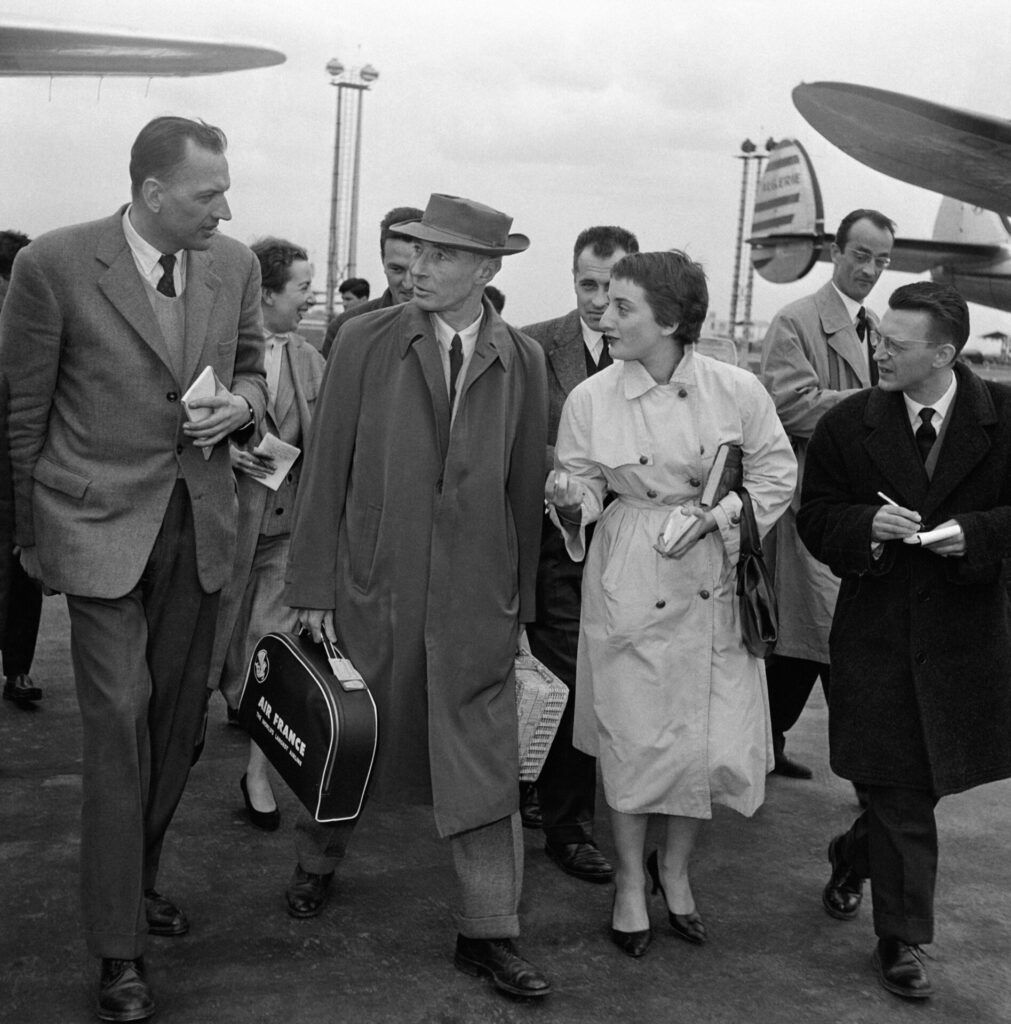
It can be read in the records of the General Advisory Committee and the transcript of my testimony before the Joint Congressional Committee. It is a story which ended once and for all when in January 1950, the President announced his decision to proceed with the program.
I never urged anyone not to work on the hydrogen bomb project, I never made or caused any distribution of the GAC reports except to the Commission itself. As always, it was the Commission’s responsibility to determine further distribution.
In summary, in October 1949, I and the other members of the General Advisory Committee were asked questions by the Commission to which we had a duty to respond, and to which we did respond with our best judgment in the light of evidence then available to us.
When the President’s decision was announced in January 1950, our Committee was again in session and we immediately turned to the technical problems facing the Commission in carrying out the President’s directive.
We sought to give our advice then and in ensuing meetings as to the most promising means of solving these problems. We never again raised the question of the wisdom of the policy which had now been settled, but concerned ourselves rather with trying to help implement it.
During this period our recommendations for increasing production facilities included one for a dual purpose plant which could be adapted to make materials either for fission bombs or materials useful in a thermonuclear program. In its performance characteristics, the Savannah River Project, subsequently adopted by the Commission, was overshadowed by this recommendation.
While the history of the GAC opposition to a crash program for the Super ended with the announcement of the President’s decision, the need for evaluation and advice continued. There were immense technical complications both before and after the President’s decision. It was of course a primary duty of the Committee, as well as other review committees on which I served, to report new developments which we judged promising, and to report when a given weapon or family of weapons appeared impractical, unfeasible, or impossible.
It would have been my duty so to report had I been alone in my views. As a matter of fact, our views on such matters were almost always unanimous. It was furthermore a proper function for me to speak my best judgment in discussion with those responsibly engaged in the undertaking
Throughout the whole development of thermonuclear weapons, many occasions occurred where it was necessary for us to form and to express judgments of feasibility. This was true before the President’s decision, and it was true after the President’s decision.
In our report of October 1949, we express the view, as your letter states, that “an imaginative and concerted attack on the problem has a better than even chance of producing the weapon within five years.” Later calculations and measurements made at Los Alamos led us to a far more pessimistic view. Still later brilliant inventions led to the possibility of lines of development of very great promise.
At each stage the General Advisory Committee, and I as its Chairman and as a member of other bodies, reported as faithfully as we could our evaluation of what was likely to fail and what was likely to work.
In the spring of 1951, work had reached a stage at which far-reaching decisions were called for with regard to the Commission’s whole thermonuclear program. In consultation with the Commission, I called a meeting in Princeton in the late spring of that year, which was attended by all members of the Commission and several members of its staff, by members of the General Advisory Committee, by Dr. Bradbury and staff of the Los Alamos Laboratory, by Bethe, Teller, Bacher, Fermi, von Neumann, Wheeler, and others responsibly connected with the program. The outcome of the meeting, which lasted for two or three days, was an agreed program and a fixing of priorities and effort both for Los Alamos and for other aspects of the Commission’s work. This program has been an outstanding success.
In addition to my continuing work on the General Advisory Committee, there were other assignments that I was asked to undertake.
Late in 1950 or early in 1951, the President appointed me to the Science Advisory Committee to advise the Office of Defense Mobilization and the President; in 1952 the Secretary of State appointed me to a panel to advise on armaments and their regulation; and I served as consultant on continental defense, civil defense, and the use of atomic weapons in support of ground combat.
Many of these duties led to reports in the drafting of which I participated, or for which I took responsibility. These supplement the record of the General Advisory Committee as an account of the counsel that I have given our government during the last eight years.
In this letter, I have written only of those limited parts of my history which appear relevant to the issue now before the Atomic Energy Commission. In order to preserve as much as possible the perspective of the story, I have dealt very briefly with many matters. I have had to deal briefly or not at all with instances in which my actions or views were adverse to Soviet or Communist interest, and of actions that testify to my devotion to freedom, or that have contributed to the vitality, influence, and power of the United States.
In preparing this letter, I have reviewed two decades of my life. I have recalled instances where I acted unwisely. What I have hoped was, not that I could wholly avoid error, but that I might learn from it. What I have learned has, I think, made me more fit to serve my country.
Very truly yours,
J. Robert Oppenheimer
Princeton, N.J.
March 4, 1954
Together, we make the world safer.
The Bulletin elevates expert voices above the noise. But as an independent nonprofit organization, our operations depend on the support of readers like you. Help us continue to deliver quality journalism that holds leaders accountable. Your support of our work at any level is important. In return, we promise our coverage will be understandable, influential, vigilant, solution-oriented, and fair-minded. Together we can make a difference.

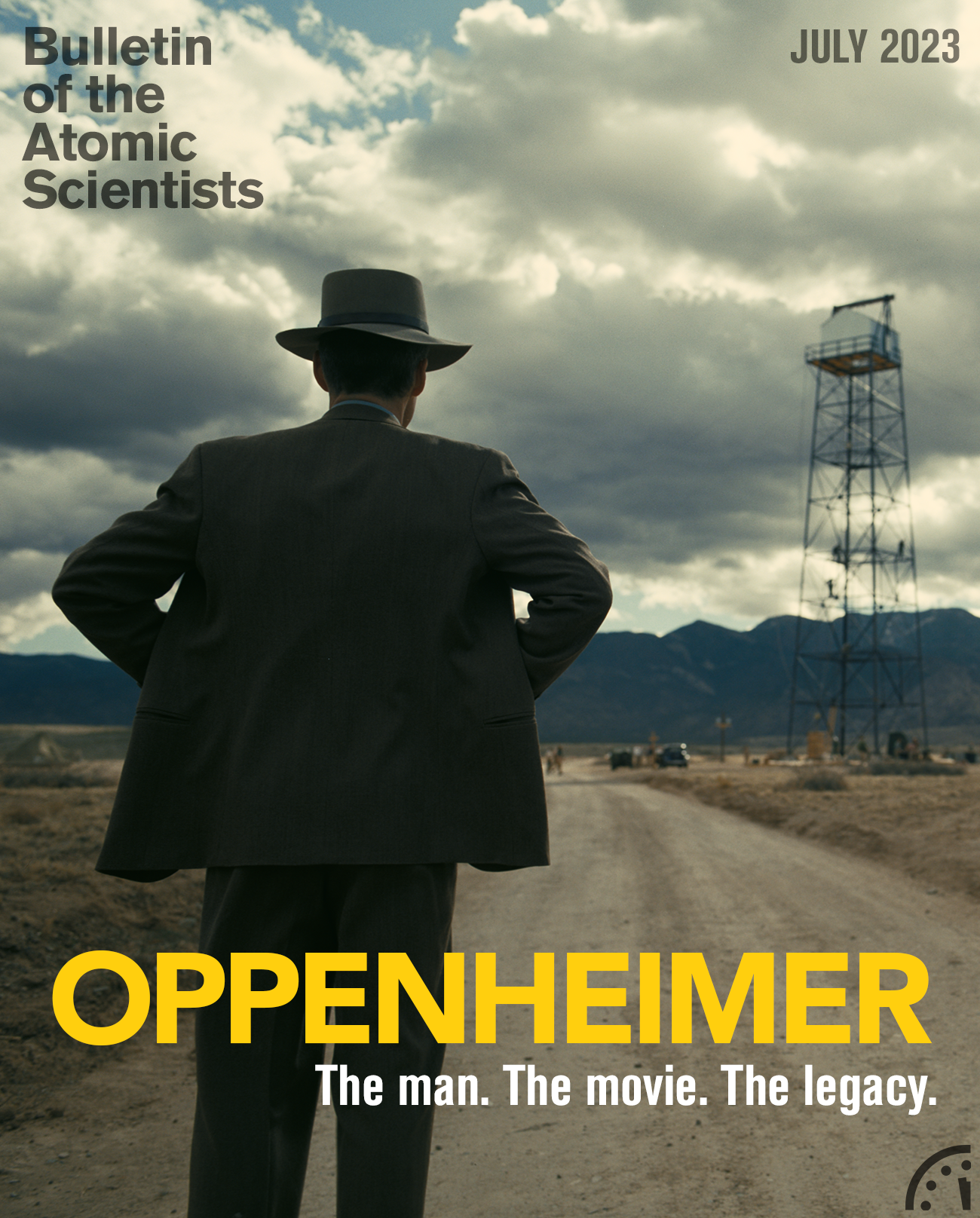
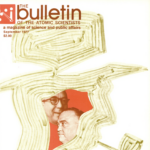
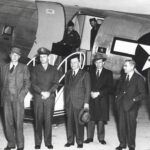
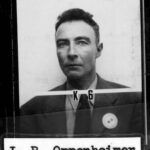


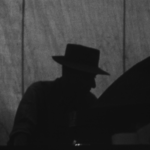
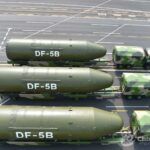
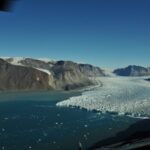


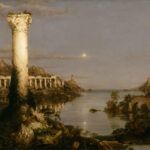
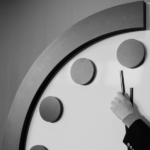








70 years later and one thing has not changed. The far right has always been absolutely dishonest and destructive to this Country’s best interests.